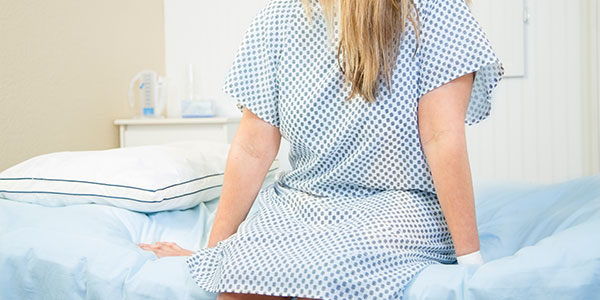Help for Women With Urinary Incontinence
If you’re one of the estimated 17 million American women who suffer from urinary incontinence, feelings of shame, embarrassment and isolation may compel you to suffer in silence. However, a growing number of treatments and therapies can help improve your symptoms and restore your quality of life — even if you’ve previously had an unsuccessful procedure. According to the American Urogynecologic Society, 80-90% of women who seek treatment for urinary incontinence experience significant improvement.
“Many patients ask if urinary incontinence is just a normal part of aging,” says Savitha Krishnan, M.D., a urogynecologist with Sutter. “It’s true that it becomes more common with age — but today’s treatments are less invasive and more effective than ever. No matter your age or past experience, it’s worth talking with your doctor about solutions.”

What Causes Incontinence
Urinary incontinence — the involuntary leaking of urine — isn’t a single condition. Most cases fall into one of three types:
- Stress incontinence: Leaking that happens with coughing, sneezing, laughing, or exercise. It’s often caused by weakened pelvic floor muscles, especially after childbirth or as muscles naturally age.
- Urge incontinence: A sudden, intense need to urinate caused by overactive bladder muscles. Triggers can include running water, caffeine, or even walking toward a bathroom. It becomes more common after menopause.
- Mixed incontinence: A combination of stress and urge incontinence.
Understanding which type you have helps your doctor tailor the right treatment.
Ways to Help Prevent or Manage Symptoms
While not all causes can be prevented, you can strengthen your pelvic floor and reduce symptoms with a few key habits:
- Pelvic floor exercises (Kegels): Done correctly and consistently, these can greatly improve bladder control. Ask your doctor for a referral to a pelvic floor physical therapist to make sure your technique is right.
- Hormone therapy: Vaginal estrogen creams or tablets may help relieve urge incontinence after menopause.
- Healthy habits: Eat plenty of fiber, maintain a healthy weight, and avoid smoking or excessive caffeine. These steps help keep your bladder and pelvic muscles in good shape.
Getting a Diagnosis
If you’re having symptoms, start with your primary care doctor, OB/Gyn or a urogynecologist — a specialist in women’s pelvic health. A physical exam, bladder diary or simple tests can help determine what’s causing the problem and guide treatment.
Treatment Options
Today’s treatments are more advanced and personalized than ever:
- Physical therapy: Targeted exercises and bladder retraining can reduce or eliminate leakage for many women.
- Medications: Certain drugs can relax bladder muscles and reduce urgency.
- Botox injections: A quick in-office procedure that helps calm an overactive bladder.
- Nerve therapies: Procedures like tibial nerve stimulation or sacral neuromodulation send gentle electrical pulses to help control bladder signals.
- Vaginal devices: Options like pessaries or disposable supports such as Impressa® can prevent stress-related leaks.
- Urethral bulking or sling surgery: For women with more severe stress incontinence, these procedures can provide lasting relief with minimal downtime.
Urinary incontinence may be common, but it’s not something you have to live with. “For most women, there’s a solution that works,” Dr. Krishnan says. “You don’t have to just put up with it.”
Learn more about urinary incontinence and treatment options at the American Urogynecologic Society’s Voices for PFD website, and talk with your doctor about what’s right for you.
Care for Every Stage of Life
From annual exams to menopause support, our women’s health providers are here to listen with respect and compassion.




